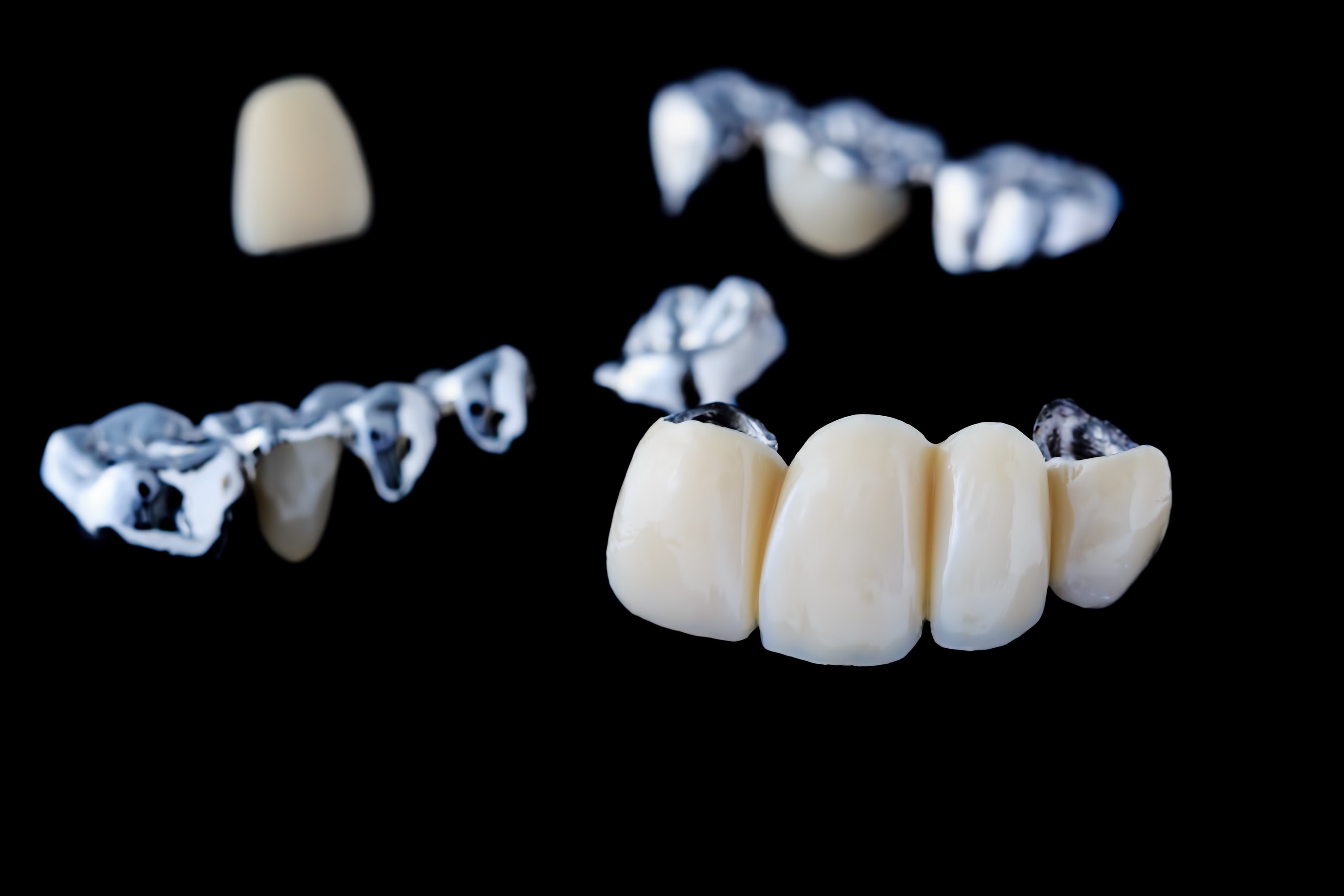Dental bridges in Cranbrook fill gaps left behind by missing teeth. Bridges restore the appearance of your smile by filling those gaps with teeth designed and coloured to match your remaining natural teeth. Bridges and supported teeth restore the ability to chew and speak naturally and prevent the remaining natural teeth on either side of a gap from shifting or rotate into the gaps in your jaw.
Dental bridges come in several different formats with distinctions between them based on how they attach to your natural teeth (or not). The different types of options are made from varying materials depending on how they attach to your natural teeth and where they are to be located in your mouth. Each option offers certain strengths and advantages which makes them appropriate in some cases and inappropriate in others. To determine what type of bridge is appropriate for solving the gaps in your smile, you should arrange for an assessment by a dentist in Cranbrook.
Traditional bridges
This most common type of bridge supports artificial teeth using crowns bonded to natural teeth at both ends of the bridged gap. Traditional bridges are very strong but rely on the strength of the natural teeth on either side of the gap which, themselves, must be ground down in order to accommodate the crowns. The changes to those natural teeth on either end of the gap render those teeth more vulnerable to cavities and gum disease.
Cantilever bridges
Cantilever bridges share much in common with traditional bridges except that they are anchored via a crown, but only at one end of the gap. That cantilever bridges require only one natural tooth makes them appropriate for supporting replacement rear molars. However, the absence of a second anchoring crown renders cantilever bridges weaker and less durable. Crowns supporting a cantilevered bridge are vulnerable to becoming loose, and the crowned tooth is vulnerable to fracture as a result of the leverage, pressure, and tension placed on that tooth and crown.
Maryland bridges
Maryland bridges support replacement teeth in a metal or porcelain framework that is attached to the rear of the teeth on either side of the gap in your jaw. Maryland bridges do not rely on a crown at either end, making them a less invasive type of bridge because they require no alteration of your natural teeth. While Maryland bridges are less invasive than crown-based bridges, they are also weaker than crown-based options. A Maryland bridge is only so strong as the bond formed between the adhesive holding the framework to the teeth on either end. That metal framework is less durable than bridges and can produce discomfort while you talk, bite, or chew.
Implant-supported bridges
Implant-supported bridges are a particularly good solution for multi-teeth gaps. Implant-supported bridges are not connected to natural teeth via crowns. Instead, they are anchored to your jaw using dental implants rooted into the jawbone itself. That anchoring of the bridge into your jaw produces the most natural appearance and function. Implant-supported bridges are the strongest option, but do represent the most invasive procedure because of the surgery required to insert the titanium posts into the jaw.
If you have been living with gaps — one tooth or more than one tooth — in your upper or lower jaw, or both, dental bridges may offer a solution that restores your smile and your natural dental function. If you’re curious about the effectiveness of dental bridges in your personal circumstances, contact a dentist near you for advice about what type of dental bridge may accomplish your goals.

